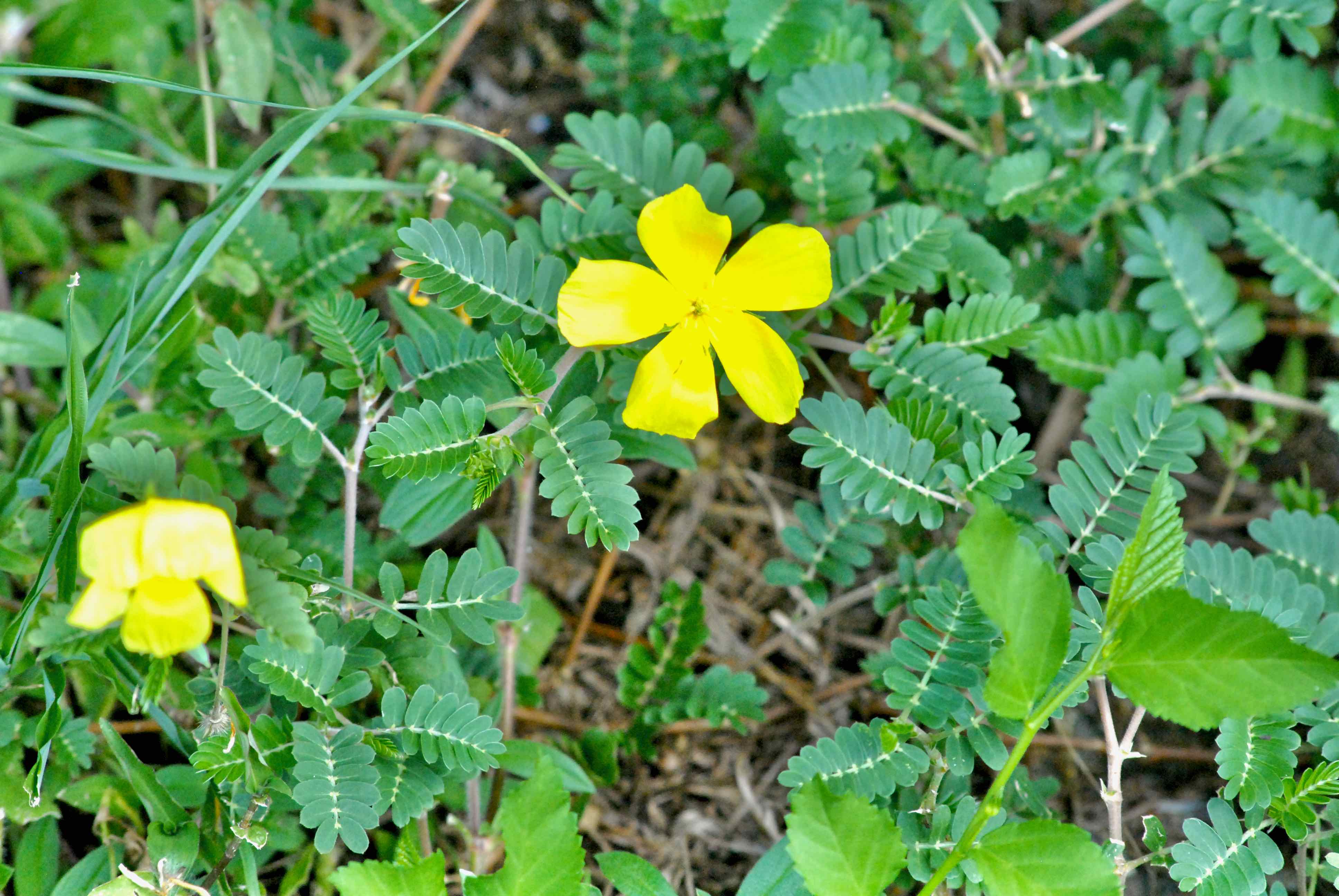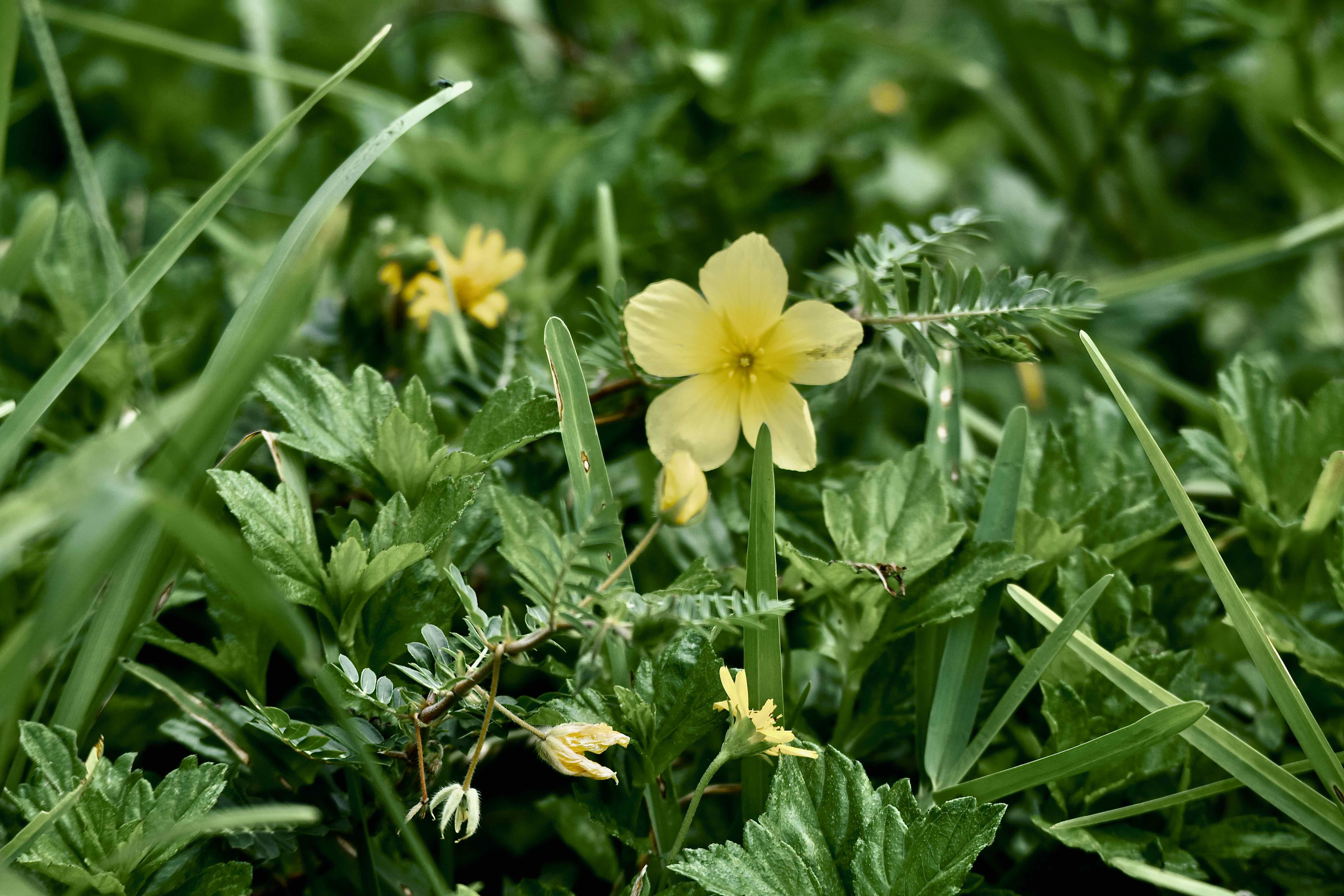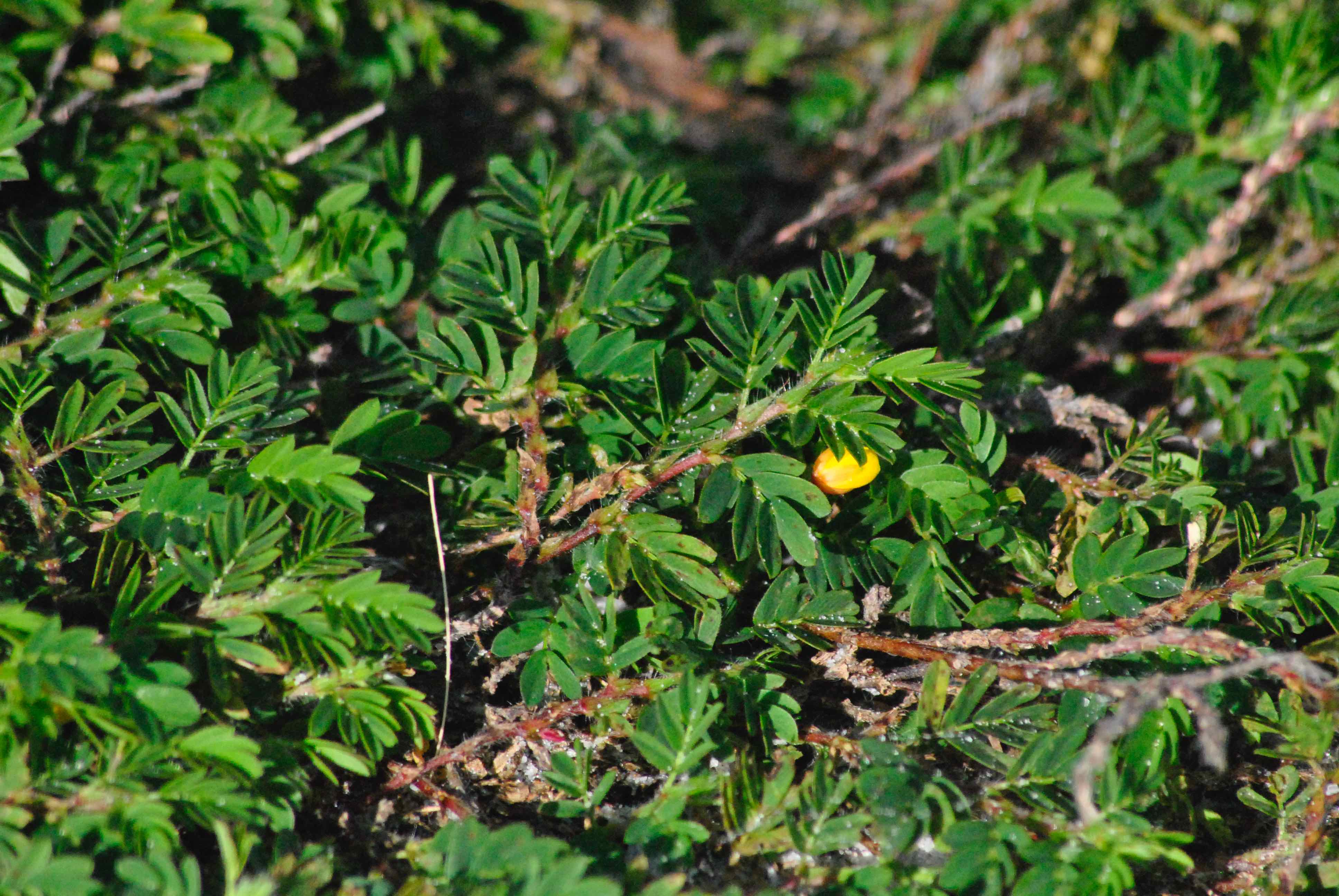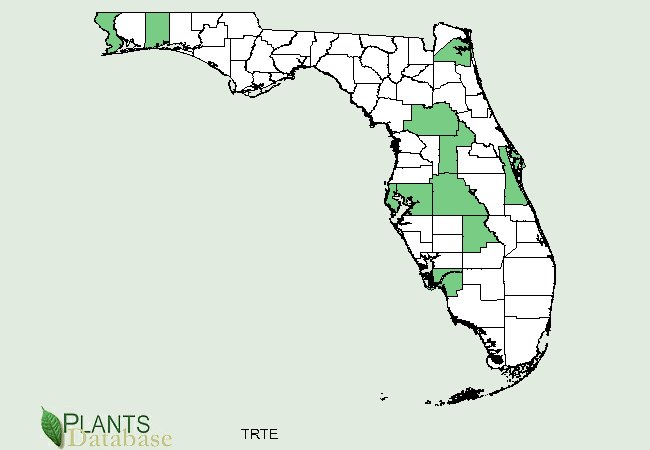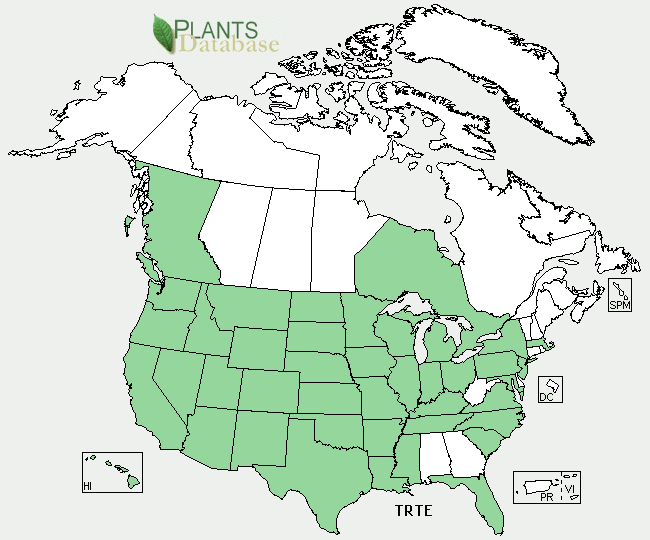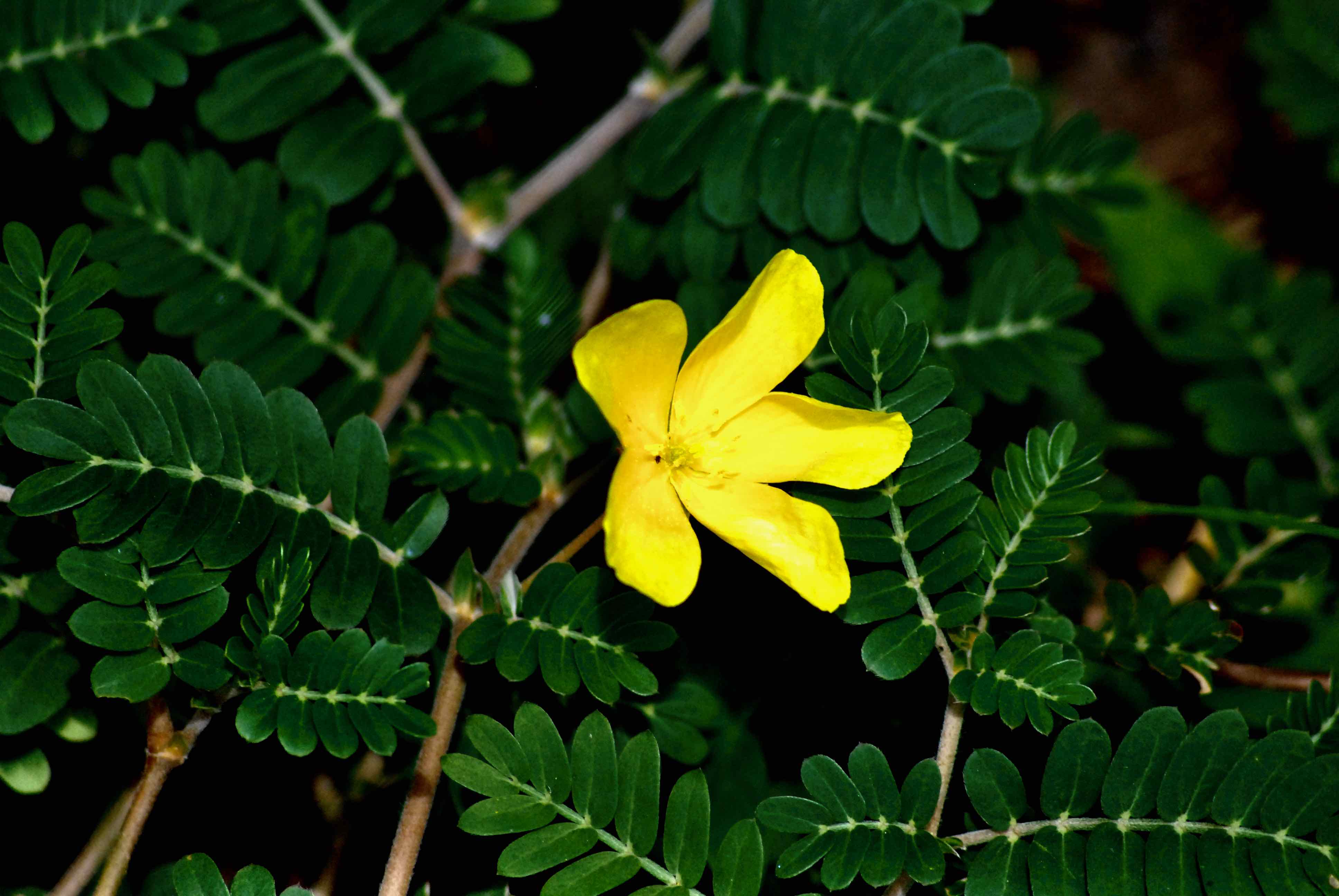
Puncturevine, photographed along Barwick Road, northwestern Delray Beach, Palm Beach County, in August 2014.
This is puncturevine, Tribulus terrestris, the black sheep of the otherwise amazing Zygophyllaceae family. Or more precisely, the goat's head of the family.
This non-native plant looks fairly innocent, even pretty, with its bright yellow flowers. But step on it with your bare foot, and you won't like puncturevine at all. Along the stem, you'll find sharply spiked burrs that look like the business end of a medieval spiked mace, or a caltrop (something else you don't want to step on, and another name for this plant). Caltrop derrives from the Latin calcitrapa or foot trap. Roman soldiers made a device used in battle called a tribulus.
At certain angles, the burr looks like a goat's head, providing the inspiration for one more common name — and again, if you step on it, you'll think this is a creation of Satan himself (yet another name for the plant is devil's weed!). This is a plant brought over from Europe that has become naturalized througout much of the United States and parts of Canada. Nine states have declared it a noxious weed, but not Florida.
In colder climes, it is an annual; in warm, sunny Florida, it is a perennial. It is a low-lying plant that can grow into a dense mat a yard or more in diameter. The burrs that inspire puncturevine's many names are its seeds. It is deceptively widespread — the USDA map doesn't show it growing in South Florida, but it can be found in disturbed areas, like roadsides, everywhere.
Those burrs are also how puncturevine spreads, sticking to all manner of things, including man, machine and beast. And they can remain dormant as long as six years and still remain viable. It's not picky as to soil — it will prosper in dunes and loose soils as well as heavily compacted roadsides. It has a deep tap root that allows it to withstand severe drought.
As we said, this is the black sheep of the Zygophyllaceae family. Probably the family's most famous member is the creosote bush, a plant of dry environs that can live as long as two years without water. The oldest living organism on earth is a creosote bush named King Clone, which has been calculated to be 11,400 years old.
Fortunately, your typical puncturevine has a much shorter lifespan. There are some, however, who believe extracts from the plant might help humans live a little longer. Some use it to lessen the symptoms of angina; others use it to help cure sexual problems, including infertility. Some studies show potential benefits, others not so much.
Bodybuilders also have been using puncturevine extracts since the 1970s to increase natural testosterone, and ultimately greater lean muscle mass and strength. A steroid called saponin protodioscin is believed to be the key chemical in puncturevine. However, clinical studies have not shown the stuff to work, at least not to the extent advocates claim. But that hasn't stopped proponents from using it. Puncturevine is probably safe taken over a short period of time, but it does come with a list of side effects. Pregnant or breastfeeding women should not take it; anyone taking heart or blood pressure medications shouldn't take it.
Extracts are sold in natural supplements stores and online under puncturevine's scientific name. As with all supplements, there is no regulatory oversight, no guarantee as to the amount of active ingredient in a particular batch or brand.
Click on photo for larger image
U.S. Department of Agriculture Distribution Maps
Links for Puncturevine / Big Caltrop

